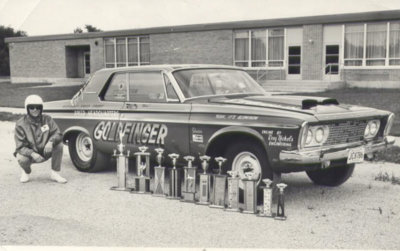- Local time
- 10:07 AM
- Joined
- Jan 16, 2011
- Messages
- 78,358
- Reaction score
- 125,725
- Location
- NorCal Sierras
Here's a newer Street Muscle Mag art.
MusclecarClub.com's with that list, from back in the day
http://www.streetmusclemag.com/news/musclecarclub-coms-list-of-the-50-fastest-muscle-cars/
IIRC many of the cars tested weren't showroom stock
most were all track tuned, IIRC some even had headers added too
the 1st of them type lists "I org. saw" it was the & I'm "sorry to say"
70 GS Buick stage 1 455 auto 3.64:1 gears was the
IIRC allegedly went best of 13.15 et. @ 106 mph or something like that
it was the fastest true "off the showroom floor, all org. stock street/muscle car"...
the Corvette & Cobra's weren't included they were considered sports cars,
so was the Camaro & Mustangs, the AMX too were considered Pony cars,
not true formula for a "muscle cars", mid size big block HT or sedan...
I couldn't find the article, I was thinking of
BUT;
IIRC it was in Hot Rod or maybe CarCraft {?} Mag too...
I may try to find it, it had real world stats, not the fabricated ones...
if you need calculators try or want to try what if #'s
here's some great calculators, pretty damn accurate
corrected based on sea level altitudes & track performance
with assumed good traction prep & conditions etc.
http://www.wallaceracing.com/Calculators.htm
MusclecarClub.com's with that list, from back in the day
http://www.streetmusclemag.com/news/musclecarclub-coms-list-of-the-50-fastest-muscle-cars/
IIRC many of the cars tested weren't showroom stock
most were all track tuned, IIRC some even had headers added too
the 1st of them type lists "I org. saw" it was the & I'm "sorry to say"
70 GS Buick stage 1 455 auto 3.64:1 gears was the
IIRC allegedly went best of 13.15 et. @ 106 mph or something like that
it was the fastest true "off the showroom floor, all org. stock street/muscle car"...
the Corvette & Cobra's weren't included they were considered sports cars,
so was the Camaro & Mustangs, the AMX too were considered Pony cars,
not true formula for a "muscle cars", mid size big block HT or sedan...
I couldn't find the article, I was thinking of
BUT;
IIRC it was in Hot Rod or maybe CarCraft {?} Mag too...
I may try to find it, it had real world stats, not the fabricated ones...
if you need calculators try or want to try what if #'s
here's some great calculators, pretty damn accurate
corrected based on sea level altitudes & track performance
with assumed good traction prep & conditions etc.
http://www.wallaceracing.com/Calculators.htm
Last edited:




















